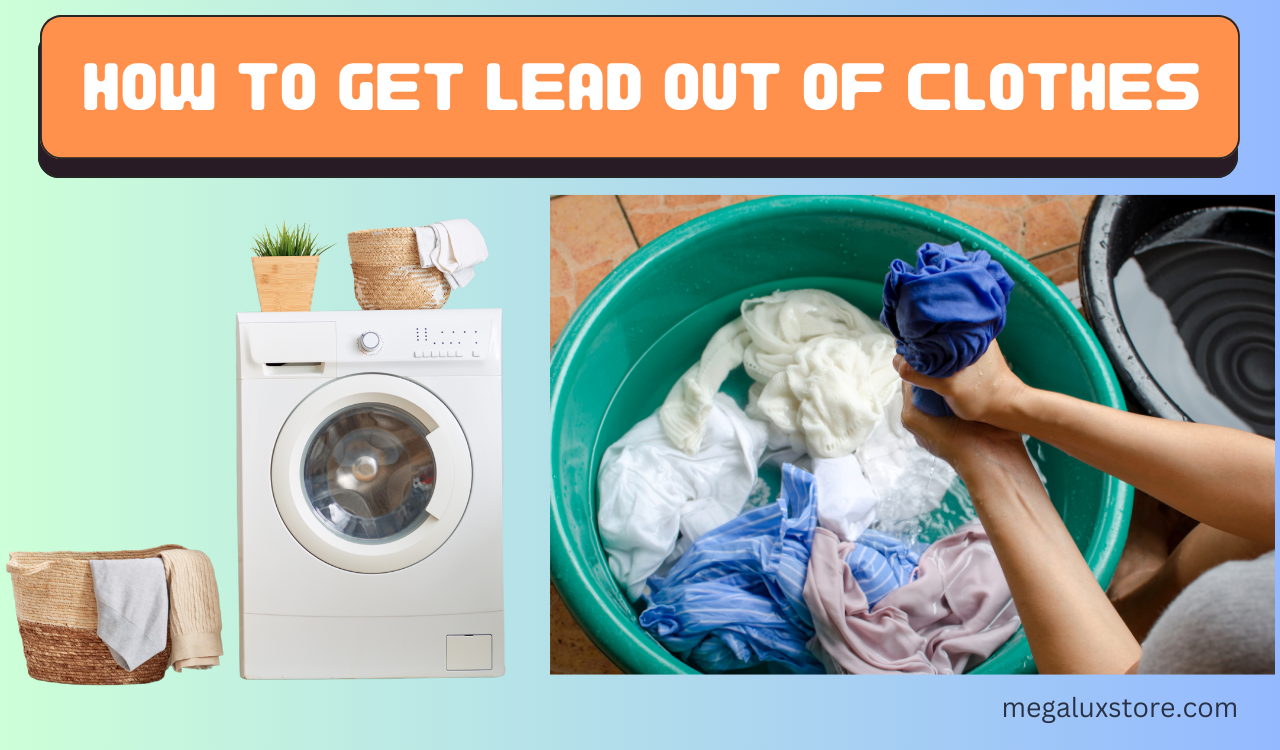How to get lead out of clothes? Lead stains on clothes can be a common and perplexing issue for many. How dangerous is lead in clothing? Lead exposure is a serious health concern, and accidental contact with lead-contaminated items, such as clothes, can pose a risk to both adults and children. Whether it’s accidental exposure to lead-containing substances or simply an unnoticed stain, addressing lead marks promptly is crucial. In this guide, we will explore effective ways to get lead out of clothes, ensuring a clean and safe wardrobe.
Understanding Lead Contamination
Lead contamination in clothes can originate from various sources. It could be exposure to lead-based paints, contaminated water, or even contact with certain metals. Understanding the potential health risks associated with lead exposure emphasizes the importance of dealing with lead stains promptly.
- Identifying Lead Stains: Recognizing lead stains is the first step in effective removal. These stains often appear as discolored spots, ranging from gray to brown. Prompt identification is crucial to prevent further damage to the fabric and minimize potential health risks.
- Precautions Before Cleaning: Before diving into the cleaning process, it’s essential to take safety precautions. Use gloves to protect your hands, and always read clothing care labels to ensure the chosen cleaning method is suitable for the fabric.
Essential Tools for Lead Stain Removal
Effective lead stain removal doesn’t always require specialized products. Common household items like vinegar, baking soda, and mild detergents can work wonders. However, for more stubborn stains, investing in specialized stain removers is recommended.
Step-by-Step Guide How to Get Lead Out of Clothes
- Isolate Contaminated Clothing: Start by identifying the clothing items that may have come into contact with lead. Separate these items from the rest of your laundry to prevent cross-contamination.
- Avoid Dry Cleaning: Traditional dry cleaning methods may not effectively remove lead from clothes. Instead, opt for washing methods that allow for better control over the cleaning process.
- Pre-Wash Inspection: Examine the contaminated clothing for any visible dirt or dust. Gently shake or brush off loose particles before proceeding to wash.
- Use a Lead-Safe Detergent: Choose a detergent specifically designed for lead removal or one that has been tested and proven to be effective against heavy metals. Follow the manufacturer’s instructions for dosage.
- Cold Water Wash: Wash the contaminated clothes in cold water, as hot water can set lead stains. Ensure proper agitation to dislodge any remaining particles.
- Double Rinse: After the initial wash, perform a double rinse to remove any detergent residue and lingering lead particles.
- Sun-Dry Outdoors: Hang the clothes outdoors to dry in direct sunlight. Sunlight has natural sanitizing properties and can help break down any remaining lead traces.
- Check for Residual Lead: After drying, inspect the clothes for any residual lead. If stains persist, consider repeating the washing process or seek professional advice.
- Use a Lead Testing Kit: For added assurance, employ a lead testing kit to confirm the effectiveness of the cleaning process. These kits are readily available and easy to use.
- Prevent Future Contamination: Identify and address the source of lead exposure to prevent future contamination. This may involve inspecting living spaces, toys, or other items regularly.
Alternative Methods for Stubborn Stains
For persistent lead stains, consider these alternative methods:
- Hydrogen Peroxide: Apply a small amount and let it sit before washing.
- Lemon Juice: Sun-dry the stained area after applying lemon juice for natural bleaching.
If all else fails, it might be time to seek professional cleaning services.
Preventing Future Lead Contamination
Prevention is key to avoiding future lead stains. Be cautious around potential lead sources, regularly check clothing for stains, and follow proper storage practices.
Conclusion
In conclusion, addressing lead stains promptly is not only about preserving the aesthetic appeal of your clothes but safeguarding your health and contributing to a safer environment. By understanding the sources, risks, and effective removal methods, you empower yourself to tackle this common issue effectively.
Frequently Asked Questions(FAQs)
Can lead come out of clothes after washing?
Yes, you can remove lead stains from clothes after washing. Soak the stained garment in a mix of white vinegar and water for 30 minutes, then gently rub with a soft brush. Launder again with a heavy-duty detergent and hot water, adding baking soda if needed. For stubborn stains, use a commercial metal stain remover following instructions. Air-dry to prevent heat setting. If the stain persists, consult a professional cleaner.
What detergent removes lead?
Choose a heavy-duty detergent with strong stain-fighting capabilities to effectively remove lead from clothes. Look for formulations designed for tough stains or metal stain removal, and consider adding baking soda for extra cleaning power. Follow the detergent’s instructions for optimal results.
Can you wash off lead?
Washing alone may not completely eliminate lead exposure, as it requires specific techniques. To minimize contact, wash hands thoroughly with soap and water. For contaminated surfaces, use lead-specific cleaning products or a mix of white vinegar and water. However, it’s crucial to address lead hazards professionally for comprehensive removal and ensure a safe environment.
Can lead be absorbed through clothes?
Yes, lead can be absorbed through clothes, especially with prolonged exposure. To reduce risk, address lead sources, practice good hygiene, and consider protective gear in potentially contaminated areas. Seek professional guidance for lead mitigation for overall safety.
What impact does lead pollution have on the environment?
Lead pollution can harm ecosystems, contaminate water, and affect wildlife, emphasizing the need for eco-friendly practices.





